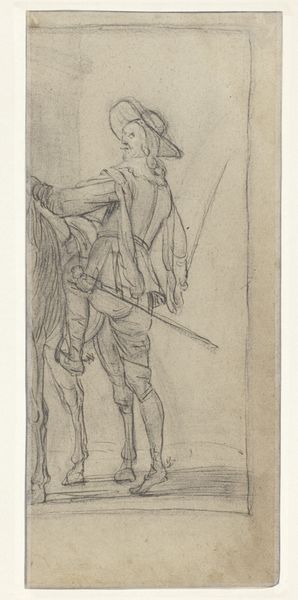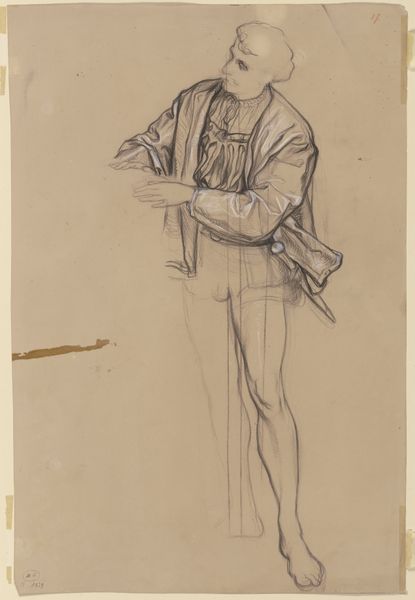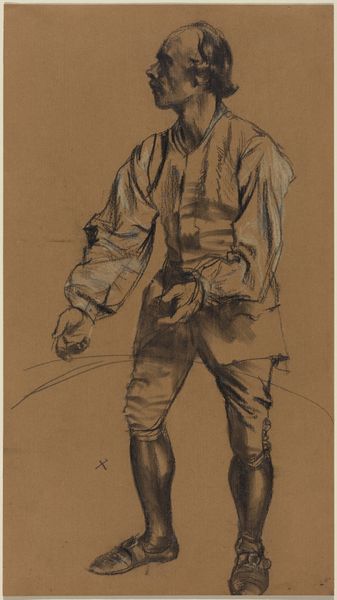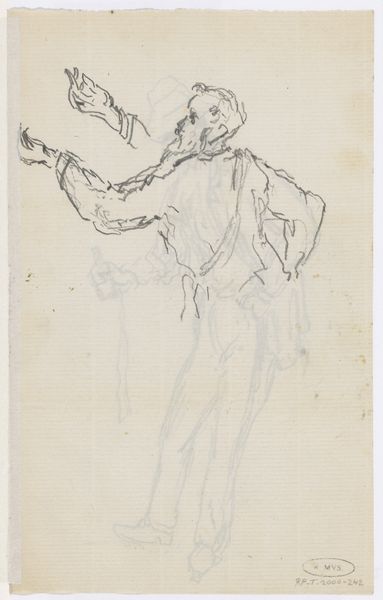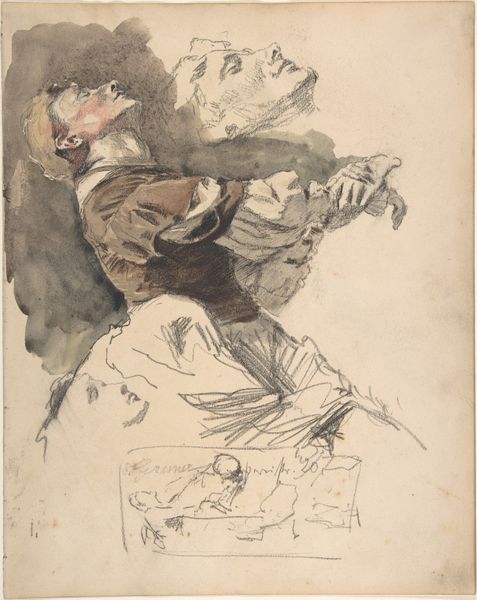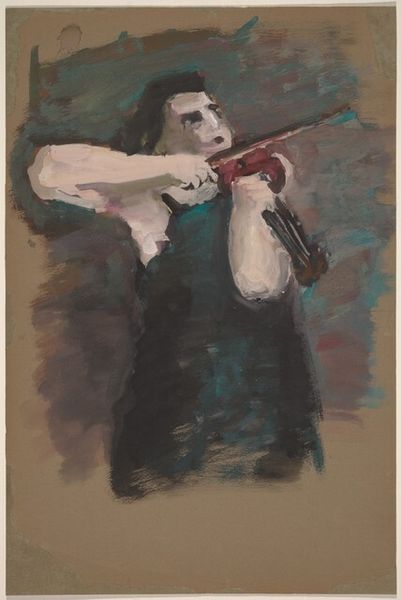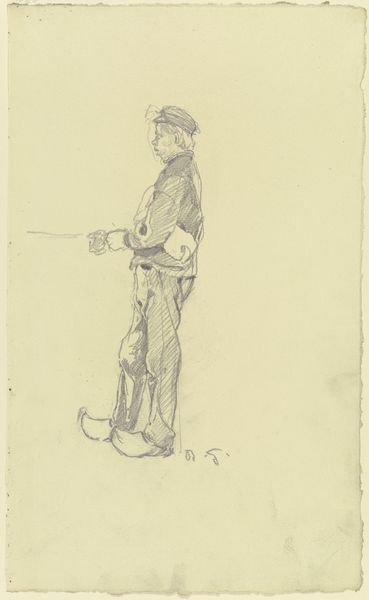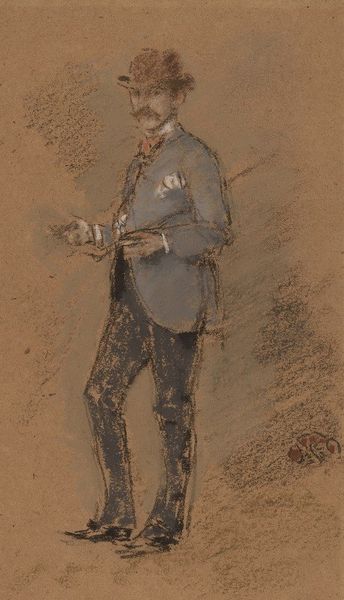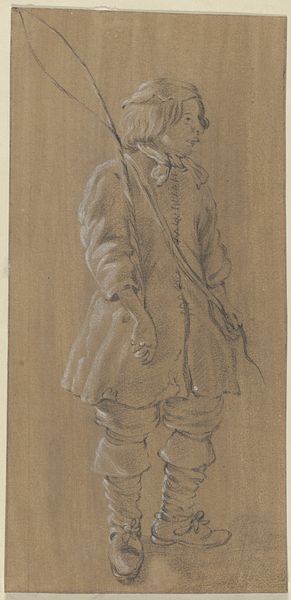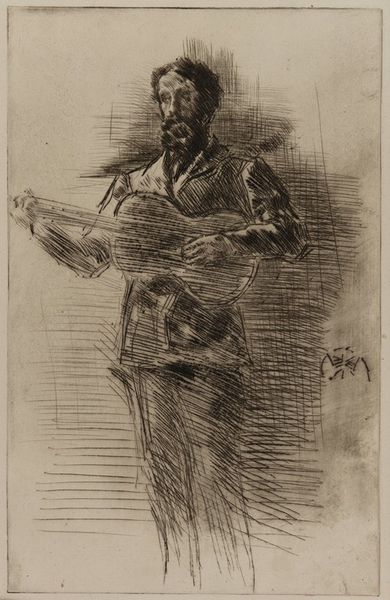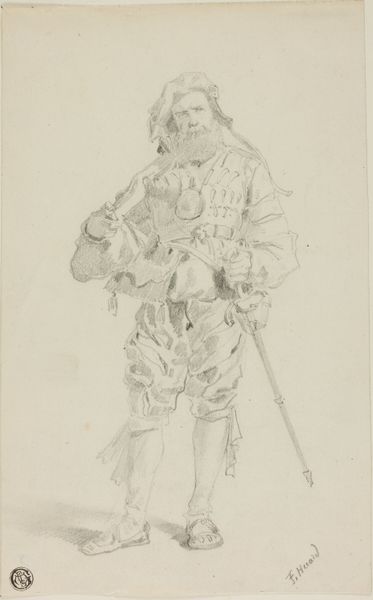
Soldaat te paard, in Spaanse dracht met getrokken pistool 1885 - 1946
0:00
0:00
drawing, pencil, charcoal
#
portrait
#
drawing
#
pencil sketch
#
charcoal drawing
#
figuration
#
pencil
#
portrait drawing
#
charcoal
Dimensions: height 500 mm, width 326 mm
Copyright: Rijks Museum: Open Domain
Editor: Here we have "Soldaat te paard, in Spaanse dracht met getrokken pistool"—or "Soldier on Horseback in Spanish Dress with Drawn Pistol"—a drawing in pencil and charcoal by Johannes Hendricus Jurres, dating somewhere between 1885 and 1946. I find it striking how dynamic the figure is, even in a seemingly simple sketch. What grabs your attention in this piece? Curator: Well, darling, isn't he dashing? More a shadow of a soldier, a memory of conflict. Jurres gives us so little definite information, and I find that delicious. See how the charcoal bleeds into the paper? He’s not concerned with rendering every button and buckle; instead, he offers a *feeling* of bravado, a whisper of a war long past, perhaps? It is more of a feeling about the artist than it is a study on military equipment. Don't you think there’s a bit of theatricality, even romanticism, in portraying this "Spanish Dress?" Editor: Absolutely! It does feel romanticized. The looseness of the lines gives it this feeling of motion, like we caught him in action, which contradicts the calm, almost melancholic feeling I get from the colour palette. Curator: Ah, yes, colour—or rather the *absence* of vibrant hues. Jurres deliberately subdues it. Like sepia-toned memories, right? Think about the potential the 'Spanish Dress' offers—vibrant reds, sun-baked yellows—yet he denies us this spectacle. Perhaps he’s not so interested in celebrating conflict, maybe contemplating its solemn weight? Editor: That's a really interesting point. So it's less about the soldier's triumph, and more about, say, the gravity of war in general? Curator: Precisely! Or perhaps Jurres merely liked how charcoal looked. It is that ambiguity, that suggestive, rather than declarative, approach that breathes life into a simple sketch and gives it lasting resonance, and is often what pulls me into older art. Editor: That makes so much sense! I'll definitely look at sketches with fresh eyes now, understanding they might be about feelings more than facts. Curator: Good. Remember, art isn't always about the what, darling; it is very often about the *why*.
Comments
No comments
Be the first to comment and join the conversation on the ultimate creative platform.
